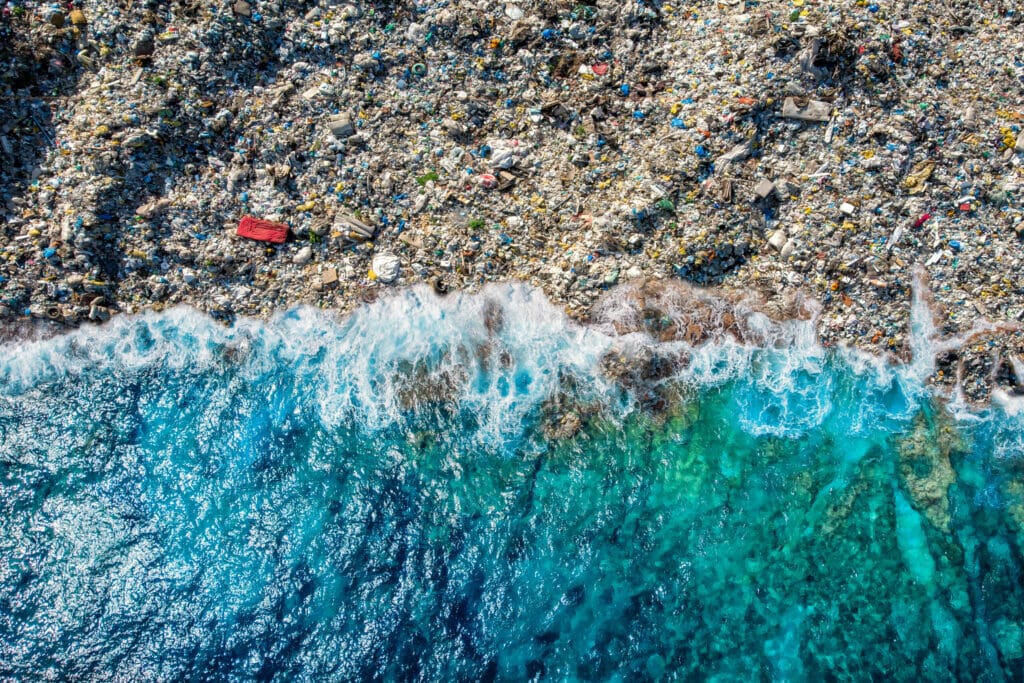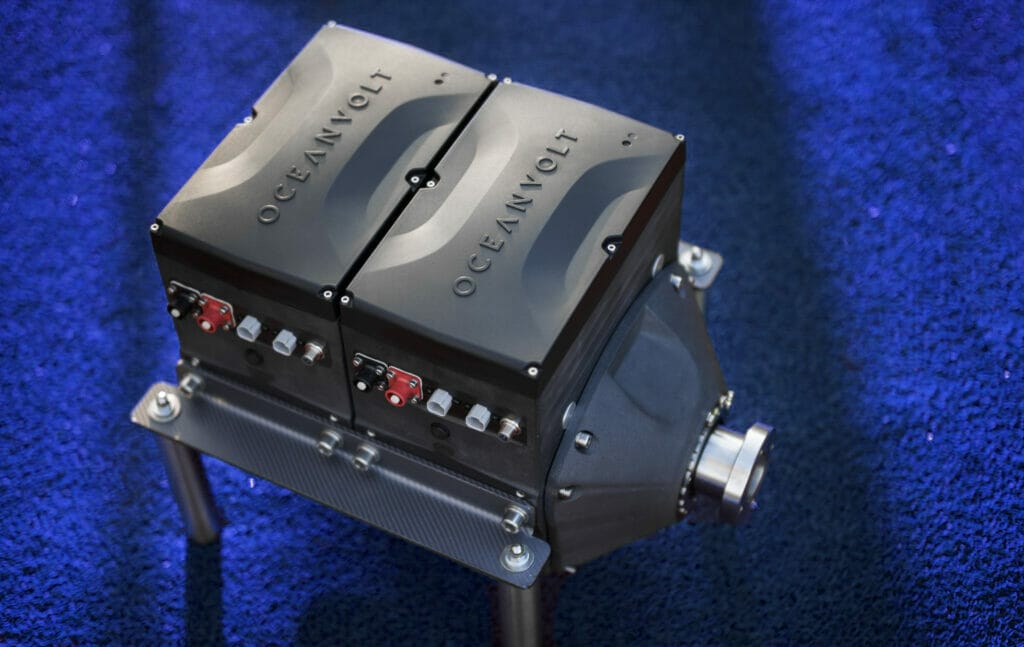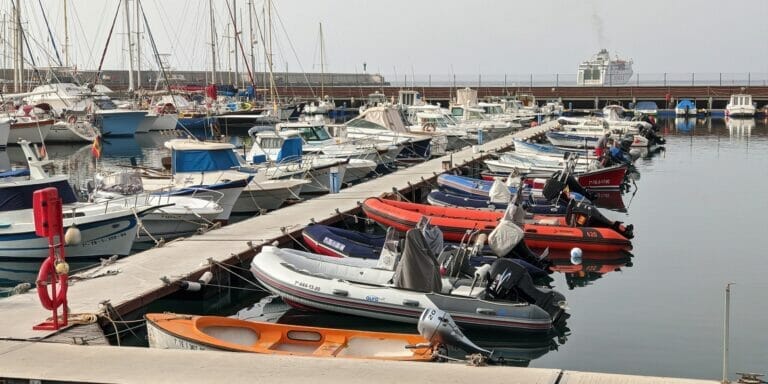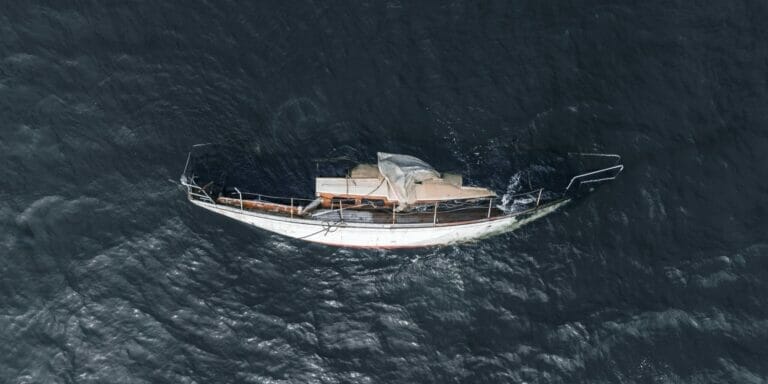More and more people are developing an awareness of the dramatic marine environmental problems and are trying to live more sustainably. Also, in global politics the discussion around marine sustainability becomes more and more important and the boating industry is regulated by increasingly strict laws. Especially when you are boating, there are many small things you can pay attention to, but they can have big consequences for the environment. Therefore, we want to give you a detailed guideline for sustainable boating and help you as a boater to be as sustainable as possible without having to sacrifice fun.
Handling Operating Fluids
That many operating fluids, especially such as oil and fuel, have serious consequences for the marine environment is well-known by now and therefore it is very important that you reduce the risk of pollution as much as possible. Please do not underestimate the devastating consequences that even the smallest amount of pollution can cause.
This means that, as far as possible, you refuel at the dock to prevent any spillage and ensure that there is about 10 percent extra volume for the fuel to expand as it becomes warmer. In addition, you should always have suitable material on hand, such as absorbent rags or similar, to immediately catch any spilled fuel.

You should also exercise the same caution when handling oil, and it should go without saying that any waste oil must be properly disposed of at professional disposal facilities (available at most marinas).
Bilge Water
The fact that bilge water can be very harmful to the environment has already been explained in our article on bilge dumping. As a recreational boater, you should also be aware that bilge water can become contaminated with oil and other toxic substances and should therefore not be discharged without further ado.
Optimally, the contaminated bilge water should be transported to a separate tank, which is then emptied in marinas. If such a solution is out of the question for whatever reason, you can also install a filter system that separates the contaminants from the bilge water before it is pumped overboard.
Ideally, of course, the bilge water should not be contaminated in the first place, and if it is, you should get to the bottom of the cause as soon as possible, after all it is in your own interest and that of your boat.
Blackwater
You should also avoid pumping out blackwater as much as possible. Nowadays this is already forbidden in many areas close to the coast and often only allowed under certain conditions 3 miles away from the coast. To what extent this is respected or enforced in practice is a completely different story, but in principle these rules are important and help to protect the marine environment.
Almost all new boats are fitted with blackwater tanks, which you should also make use of. Retrofitting an older boat with such a tank is also not rocket science. Just finding pump-out stations is still difficult in some areas.
However, we are not naive and know how it works in practice. In some situations, such as when sailing in very remote areas, the collection and subsequent pumping out of blackwater is simply not feasible. In such circumstances, when the direct discharge of blackwater into the sea is unavoidable, you should take even more care to ensure that only human waste really ends up in the toilet and that easy-to-dissolve toilet paper is used.
In addition, composting toilets have become increasingly popular on boats over time, and you may also be able to switch to such a solution.
Graywater
A separate gray water tank is certainly the most optimal solution, but especially for smaller boats this is simply not feasible. However, disposing of gray water directly into the sea does not have to be harmful to the environment, as long as you make sure to use only eco-friendly products.
Due to the increased awareness of environmental issues among consumers, the range of environmentally friendly products has increased enormously in recent times. With a little bit of attention when shopping, you can find many good and also inexpensive products that serve their purpose perfectly without endangering the marine environment with aggressive chemicals.
But be careful, because some products are marketed as environmentally friendly due to the sustainability trend, although they are not as environmentally friendly as advertised. It’s best to take some time to learn about harmful ingredients, so you can make up your own mind about products that are supposedly eco-friendly. Under no circumstances should you use products that contain chlorine, bleach, phosphates or microplastics.
Waste
Of course, you should collect the trash from food and packaging on board and dispose it properly on land. On the water, it is even more important that no garbage gets into the environment, because unlike in a city park, there is no cleaning service at sea that comes by in the morning to clean up after you. What gets into the sea is likely to stay there for a very long time and consequently cause a lot of damage to the marine environment.

Especially for people who plan to spend a longer time ashore far away from land infrastructure, it is important to think about waste management before setting off. It’s best to remove any unnecessary packaging already when provisioning in order to minimize the waste on board from the start. At the same time your bilge will benefit, because there is nothing more annoying than a peeled, soggy label from a can that clogs the bilge pump.
It also makes sense to carry a metal cutter to cut up cans and similar sturdy packaging and reduce the volume of waste.
Boat Cleaning and Care
When cleaning your boat, it is often sufficient to simply use water. If you do need to use cleaning agents, make sure that the products you use are environmentally friendly, and of course the same goes for maintenance products.
In general, you should also try to do as much work as possible when you have the boat out of the water. This way you minimize the risk of harmful substances entering the marine environment.
https://www.traditionrolex.com/49
A particularly critical issue is antifouling paint, which is understandably a must for many boat owners. The problem is that many of these coatings contain substances that are harmful to the environment, such as biocides or metals like copper and zinc. Although manufacturers like Finsulate, for example, are trying to bring alternative antifouling paints to the market, there has unfortunately not yet been a convincing breakthrough. Current alternatives are usually very expensive and/or require a complex application, which can only be carried out by experts.
Invasive Species Prevention
Invasive species can pose a major threat to marine habitats and therefore you should strive to transport as few invasive species as possible from one area to another. Make sure your boat and equipment are clean and that all seawater containers such as livewells and ballast tanks, as well as the bilge, are empty. The hull in particular is a fast-growing area for many species, so an antifouling coating is also important in this respect, despite the threat to marine life caused by the toxic substances in the coating, as mentioned above.

Good Maintenance
You should make sure that your boat is well maintained, not only because it is beneficial for your boat, but also because it benefits the environment. Why? A well-maintained boat is more efficient, wears less, and reduces the risk of causing a damage in which hazardous substances are released into the environment. To make it even clearer: An overgrown, poorly maintained hull has more drag in the water, which reduces efficiency and increases fuel consumption. A poorly maintained engine wears out faster and has a shorter lifecycle, which is not sustainable.
There are many more negative consequences of poor maintenance, so make sure your boat is optimally maintained. In the long run, this is also in your own financial interest and most importantly, it serves your own safety on board.
Optimized Consumption
In general, you should try to optimize any consumption on board. Try to run in the RPM range where your boat is most efficient. Turn on any power consumers only when you really need them.
While it makes sense to have a safety buffer when provisioning, don’t buy too much perishable food that you may have to throw away. There are plenty of long-lasting foods to choose from as a safety buffer.
Good Planning
Before you set sail, it’s worth spending some time on proper planning to avoid situations that will harm both you and the environment.
Plan in advance which marina you want to call at, because this way you can make sure that the necessary infrastructure is available to perform particular tasks on your boat, such as emptying the blackwater tank. In addition, you’ll be helping the environment if you choose to visit marinas that make an effort to implement certain sustainability practices. There are various certifications that are awarded to marinas with such eco-friendly efforts, examples of such certifications are Blue Flag, Gold Anchor, Blue Star Marina, and the Clean Harbour Guidelines.
Take a look at the weather forecast, because fighting wind and waves will increase your consumption. Also, with proper meteorological planning, you reduce the risk of getting caught in a storm, which could have severe consequences for both the crew and the environment.
Renewable Energy
The good thing about boating is that you are in direct contact with sun, wind and water, and thanks to our technological progress it is possible to generate energy from these infinitely available resources. Therefore, you should also make use of them and cover your energy needs on board with solar panels, wind generators or hydrogenerators. Nowadays, many of these renewable energy systems are very efficient and there is no reason to do without them. Moreover, it’s a great feeling to be self-sufficient in terms of energy, and to be completely independent of shore power or any fuel-powered generator.
Even if the development of marine propulsion systems with renewable energy is still in its early stages, you may already be able to switch to an alternative propulsion system such as hybrid or even all-electric. The technological progress in this respect is remarkable and more and more boatyards are starting to offer such environmentally friendly alternatives.

Anchoring
When anchoring, you should take care to leave as little damage to the marine ecosystem as possible with the anchor and its chain. Avoid anchoring in sensitive marine ecosystems such as coral reefs, shellfish beds and seagrass beds and try to anchor in mud or sand if possible.

The previously mentioned importance of good planning also plays a decisive role when anchoring, as you can already check in advance for suitable anchorages and, in the best case, even get hold of a mooring buoy.
Navigating Shallow Waters
When navigating through shallow waters, ground contact of the hull, engine or propeller can cause long-term damage to the marine ecosystem on the seabed.
Such incidents are especially critical for seagrass meadows, which have a frequently underestimated importance in marine ecosystems. In the case of ground contact or even if the distance between the boat and the seagrass meadow is too small, this can quickly result in damage that takes many years to recover from or even leaves the meadow scarred forever. Many people are not aware of how important seagrass is for the health of the marine environment as well as for the global environment, as they absorb large amounts of carbon dioxide from the atmosphere and thus help to counteract climate change.
Therefore, you should navigate your boat responsibly and with great caution in order to avoid damaging the seabed with your boat. If you do hit the bottom, stop the engine immediately and try to get back to deeper water without engine power.
Respect for Marine Wildlife
Even though marine life is incredibly impressive and makes us humans feel the desire to get closer to the animals or even touch them, you should not do this. As a boater you should always keep a reasonable distance from the marine wildlife to avoid disturbing or even harming them. It is best to have a good pair of binoculars with you, which will allow you to observe the animals even at a greater distance. As a general rule, you should not touch marine life, because you could accidentally injure them as well as catching diseases or getting injured yourself.
In addition, you should never chase an animal or try to encircle it. If an animal is near your boat, disengage the engine if possible and try to avoid abrupt changes in course and speed so that the animals can best anticipate your behavior.
As with almost all wildlife, feeding animals on the water is taboo. If you encounter an injured or sick animal, do not try to help immediately unless you know exactly what you are doing. It is better to try to contact appropriate professionals and then discuss any further action.
Sustainable Food
When you travel by boat, you’re also doing something good for the environment by making an effort to eat sustainably. During your travels, try to taste as many local foods as possible and avoid buying the familiar products from home that have traveled a long way to get to you. In addition, local food is easier on your wallet and it’s much more exciting to try something new than what you already know and can buy at home.

We don’t want to start a discussion about eating living creatures but if you like to eat seafood, then just catch your own food. This is most likely the most sustainable way to consume seafood. If you decide to catch your own food, make sure you are selective and familiarize yourself with how to catch them properly and which ones you can and can’t keep. Always treat all living creatures with respect and take responsibility!
Reef Save Sunscreen
When using sunscreen, make sure the products you use are labeled reef safe and do not contain synthetic UV filters such as octinoxate or oxybenzone. Such synthetic UV filters enter the ocean when you swim or shower, where they cause substantial damage to corals. In some areas, such as Hawaii, only reef save sunscreens are allowed, but you should use reef safe products no matter where you are. After all, there are many alternatives based on mineral and organic UV filters.

Choice of Boat
Already when buying a boat, there are some things you can consider to be as sustainable as possible. We don’t want to compare sailboats and powerboats here, because while at first glance sailboats are the more sustainable choice because they move with the wind, powerboats have a completely different purpose, and it doesn’t make sense to buy a sailboat instead of a powerboat just because it seems to be more sustainable. Rather, we want to shed light on the issue of recycling a boat at the end of its lifecycle and encourage you to think about sustainability already before buying your boat, independent of the decision whether to choose a sailboat or a powerboat.
For some time now, the issue of boats that are at the end of their life cycle and have to be scrapped has become more and more a topic of public discussion. The main problems are the expensive transport to the scrap yard and the extremely costly recycling of boats. This is particularly problematic for boats made of GRP (glass fiber reinforced plastic), as the material is very difficult to recycle. In contrast, aluminum as a boat material can be recycled very easily, though it is quite energy thirsty in its production. You should keep these differences regarding recycling in mind when choosing your boat. When buying used, the material is of course not decisive in terms of sustainability, because the production of the boat is no longer reversible. But when buying new, this is definitely a point that speaks for the choice of an alternative material such as aluminum.

We could go into a myriad of aspects here, but they are so varied and boat-specific that we’d rather leave it general and let you take the step of thinking about it in more detail. Basically, before you buy, you should go through all the points we have listed in this article and consider how well they can be implemented with the boat you have in mind. If you already consider important aspects of sustainability at the time of purchase, you will be spared costly modifications later on.
Sustainable Mindset
Finally, we want to encourage you to develop a general sustainable mindset, as this will help you develop a certain intuition about environmentally friendly boating. We want to emphasize that you should not expect yourself or others to be perfectly sustainable. That’s not the point. Any consumption, including the enjoyment of boating, has a bad impact on the environment to some extent. Just try your best to reduce the extent of negative externalities you cause through your actions as much as you can. Also, avoid pointing fingers at others, that usually doesn’t help much. But instead, drawing attention to problems and seeking dialogue with others is of course desirable!
To make sure that future generations can still appreciate the marine environment that we all admire so much, each and every boater must take responsibility for their actions towards the environment and that is how we will succeed in preserving the fragile marine life. If each individual adopts a basic sustainable mindset, we can do it together without compromising our enjoyment of boating.
Checklist for Sustainable Boating
In the following we have for you an overview of all the points that we have presented to you:
- Be careful with handling operating fluids.
- Handle the bilge water properly.
- Make use of your blackwater tank and discharge it properly.
- Make sure that only environmentally friendly products end up in the graywater.
- Take waste management on board seriously.
- Use only environmentally safe products for boat cleaning and care.
- Do your best to prevent the spread of invasive species.
- Make sure your boat is well maintained.
- Optimize any consumption on board.
- Before you set sail, plan your trip.
- Make use of renewable energy.
- When anchoring, be careful to leave as little damage to the seabed as possible.
- Avoid bottom contact, especially where there is seagrass or other sensitive marine life.
- Treat marine wildlife with the respect it deserves and be a passive observer.
- Make an effort to eat sustainably.
- Make sure to use only reef save sunscreen.
- Start thinking about sustainability when you buy your boat.
- Develop a sustainable mindset.
We hope that with this post we could give you some practical tips for more sustainable boating and that you will do your part to protect the marine environment. Do you have any comments on this topic? Questions, suggestions, criticism? Feel free to leave a comment, we look forward to what you write and try to respond to each one.

















